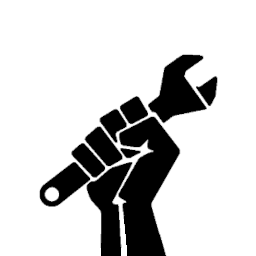cross-posted from: https://slrpnk.net/post/21031468
SSDs can only tolerate a certain number of writes to each block. And the number is low. I have a 64gb SSD that went into a permanent read-only mode. 64gb is still today a very useful capacity. Thus the usefulness is cut short by hardware design deficiencies.
Contrast that with magnetic hard drives which often live beyond the usefulness of their capacity. That is, people toss out working 80mb mechanical drives now because they’re too small to justify the physical space they occupy, not because of premature failure ending the device’s useful life.
Nannying
When an SSD crosses a line whereby the manufacturer considers it unreliable, it goes into a read-only mode which (I believe) is passworded with a key that is not disclosed to consumers. The read-only mode is reasonable as it protects users from data loss. But the problem is the nannying that denies “owners” ultimate control over their own property.
When I try to
dd if=/dev/zero of=/dev/mydrive, dd is lied to and will write zeros all day and report success, butdd’s instructions are merely ignored and have no effect.The best fix in that scenario would generally be to tell the drive to erase itself using a special ATA command, like this:
$ hdparm --security-erase $'\0' /dev/sdb security_password: "" /dev/sdb: Issuing SECURITY_ERASE command, password="", user=user SG_IO: bad/missing sense data, sb[]: 70 00 01 00 00 00 00 0a 00 00 00 00 00 1d 00 00 00 00 00 00 00 00 00 00 00 00 00 00 00 00 00 00 SG_IO: bad/missing sense data, sb[]: 70 00 0b 00 00 00 00 0a 00 00 00 00 00 00 00 00 00 00 00 00 00 00 00 00 00 00 00 00 00 00 00 00Not sure why my null char got converted to a yen symbol, but as you can see the ATA instruction is blocked.
Here is a take from someone who endorses the nannying. The problem is that there is a presumption on how the drive will be used. Give me a special switch like:
$ hdparm --security-erase $'\0' --I-know-what-I-am-doing-please-let-me-shoot-myself-in-the-foot /dev/sdband this is what I would do:
$ dd if=KNOPPIX_V8.2-2018-05-10-EN.iso of=/dev/foo $ hdparm --make-read-only /dev/fooWhen the drive crosses whatever arbitrary line of reliability, it’s of course perfectly reasonable to do one last write operation to control what content is used in read-only mode.
5 years later when a different live distro is needed, it would of course be reasonable to repeat the process. One write every ~5 years would at least keep the hardware somewhat useful in the long term.


Better get SSD+HDD (SSD boot for OS, HDD storage for everything else) when setting up your PC rather than single or multiple SSDs, much cheaper, data doesnt get lost when the boot drive dies
That indeed makes sense from a purely practical PoV, if you neglect right to repair. But the drive maker (Apacer) is effectively denying users their right to repair through the nannying. Your approach is good for repair avoidance but still supports anti-repair suppliers in the end.
They would have to move away from SSD manufacturers in which their products are sourced from that particular maker